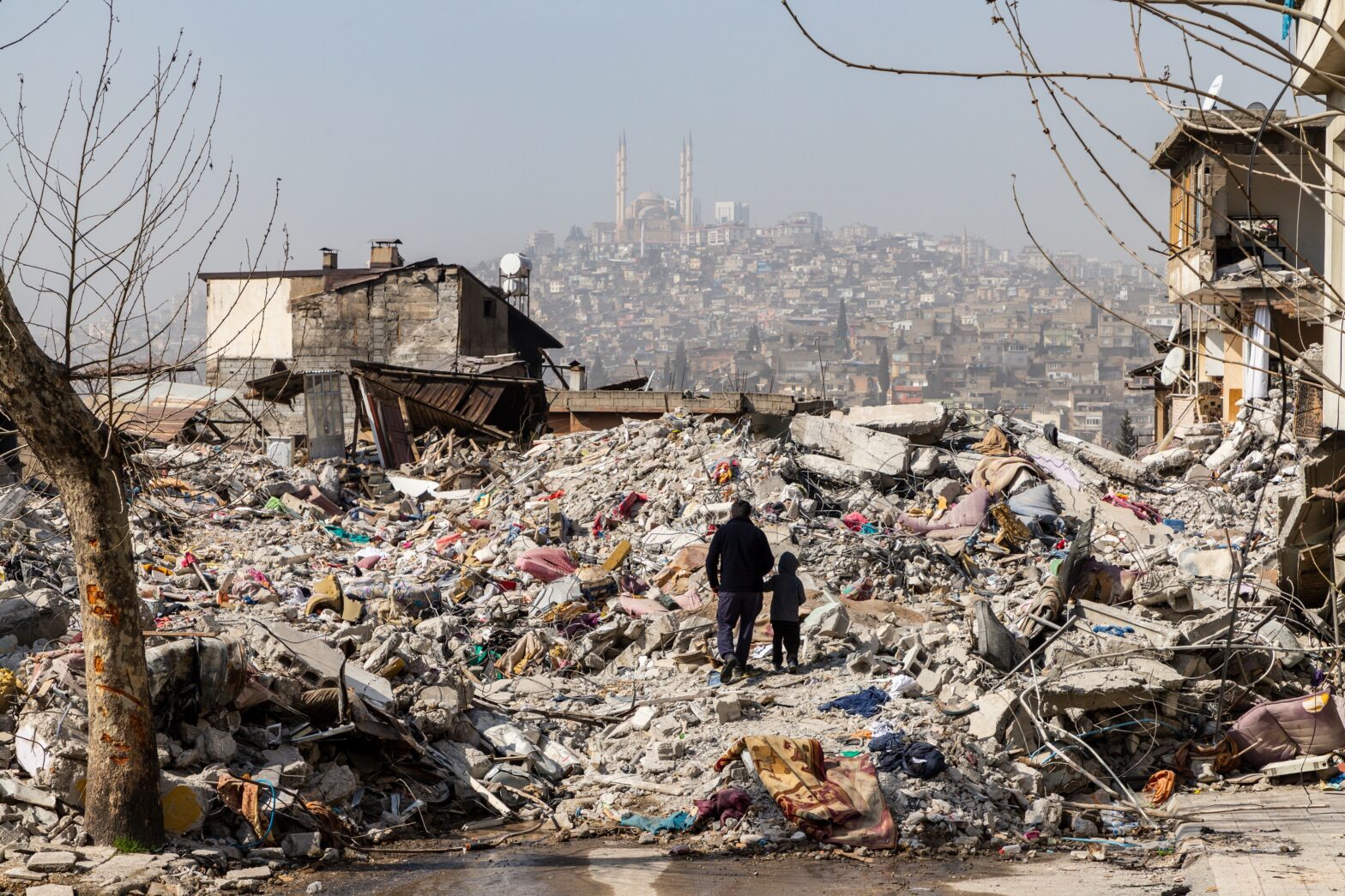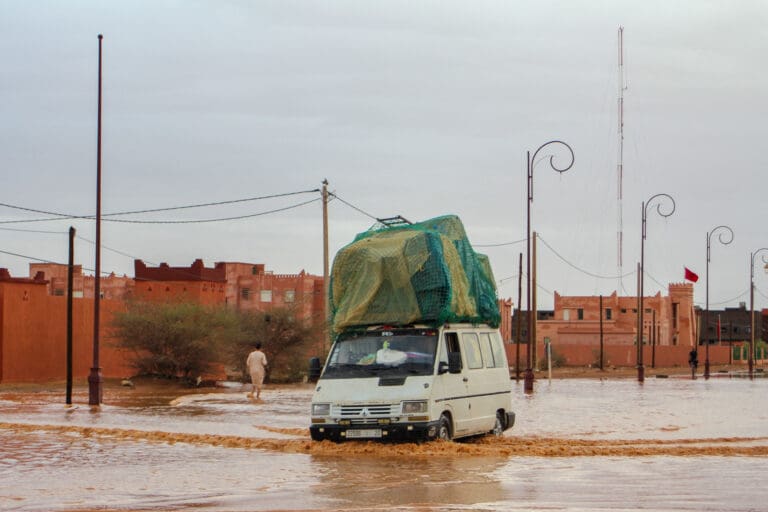
Global Financial Reintegration
Key to Türkiye’s Earthquake Recovery
Policy Note, June 2023
Türkiye’s vulnerability to earthquakes, exemplified by the earthquakes of 1999 in Izmit and recently in Anatolia, highlights the urgency for improved earthquake resilience. Despite efforts to upgrade housing stock, a significant portion of the country’s buildings remain vulnerable. This policy note discusses the need for Türkiye to re-implement first-generation reforms to attract international investments for long-term, developmental objectives. It proposes the establishment of an International Earthquake Fund for Development (IEFD) to finance resilient housing projects. The IEFD will feature a governance structure that promotes transparency, accountability, and operational autonomy, while utilizing blockchain technology to enhance investors’ trust. By issuing long-term sustainable bonds and sukuks, the IEFD will fund real estate projects that bolster earthquake preparedness, foster investors’ confidence, and contribute to Türkiye’s economic longevity.
Introduction
Türkiye is in a region that is susceptible to earthquakes and has experienced numerous, deadly incidents over several decades. The most devastating earthquake in recent memory was the 1999 Izmit earthquake, which resulted in the loss of thousands of lives and a decline in economic activity.1 In response to this disaster, there has been an increasing awareness of the need to prepare for prospective earthquakes.2 Earlier this year, Türkiye suffered another major earthquake that hit the growing industrial center of Anatolia, revealing the country’s vulnerability once again.
According to the World Bank, the majority of housing stock in Turkish cities built prior to 2000 is highly vulnerable to seismic and climate hazards and urgently requires strengthening.3 However, only around 4% of the 6.7 million residential buildings across the country have been updated. The estimated cost of bringing all existing housing stocks up to standard is rather high and close to $465 billion.4
Replenishing buildings across Türkiye is inevitable, yet speeding up the process could save thousands of lives. However, international funding is required to achieve earthquake resilience in a short time frame. With experts expecting an earthquake in Istanbul at any moment,5 policymakers should work on replenishing all buildings as soon as possible, at least within the next 10 years. After the recent earthquake, the international community was swift in providing immediate humanitarian aid to Türkiye,6 but a lasting solution to improve existing housing stocks is needed.
Incentive-compatible, market solutions could be employed to fund the increasing demand for new housing after the earthquake, with the Turkish government and international organizations—like the World Bank—leading the way. The issue is not solely about regulating new building construction. While it is crucial to enhance regulatory and oversight institutions, even with improvements, the limited access to longstanding financing compels policymakers and the public to accept relaxed housing standards. One of the leading factors contributing to unethical practices in businesses is corruption and the pursuit of profits through cost-cutting measures. The adoption of proper institutionalized financing can help reduce these motives by offering a risk-mitigating structure that is inherent in formal financing routines. Undoubtedly, simply providing increased access to financing alone cannot fully address corruption issues. However, implementing formal international financing with an appropriate governance structure can also improve enforcement of proper construction standards. Hence, responsible financing also leads to enforcing high standards for housing development. To attract socially-minded, sustainable investments, it is important to provide assurances that proper construction standards will be upheld. Therefore, the crucial components include: initial reforms, enhanced construction oversight, and an International Earthquake Fund for Development (IEFD).
Although Türkiye is considered an upper middle-income country and has the capacity to mitigate regional disasters, investing in new real estate development projects to prepare for potential earthquakes may raise concerns about the sustainability of the current account deficit. In order to maintain macroeconomic and financial stability, Türkiye requires longer-term project financing.
In recent years, though, the country has distanced itself from international financial markets under a perplexing new economy paradigm. Nevertheless, crises often bring about reform, and Türkiye must once again implement first-generation reforms while establishing an IEFD to expedite earthquake recovery and invest in the country’s future preparedness.
This policy note aims to contribute toward preparing for potential earthquakes in Türkiye and improving the country’s readiness for future disasters. Firstly, it emphasizes the urgency of enhancing earthquake resilience in Türkiye—given the country’s susceptibility to earthquakes—as exemplified by the 1999 Izmit and recent Anatolia earthquakes. Secondly, it stresses the need for Türkiye to reintroduce first-generation reforms to attract international investments for enduring developmental objectives, including improved earthquake preparedness. Thirdly, it proposes the establishment of an IEFD to finance new cities and resilient housing projects in Türkiye. To enhance investors’ trust, the policy note suggests a governance structure for IEFD that promotes transparency, accountability, and operational autonomy. Fourthly, the note advocates for the issuance of sustainable bonds and sukuks7 by the IEFD to fund real estate projects that contribute to earthquake preparedness and economic growth in Türkiye. Lastly, the policy note stresses the importance of Türkiye’s seizing the opportunity to re-engage with international financial markets and developing a plan to address housing vulnerability and strengthen earthquake resilience.
What are the Initial Steps to Make this Earthquake Resilience a Reality?
The simple answer would be to put first-generation reforms back on the agenda. Indeed, improving predictability and confidence in the Turkish economy is crucial to attract long-term investments. The country’s inflation rate, which stood at over 40% in April 2023 and above 50% earlier in the year,8 and exchange rate fluctuations have made it necessary to address this issue urgently.9 While Türkiye is trying a new economic model with export-driven, developmental motives, it seems to have compromised on first-generation reforms, including price and financial stability measures.
First- and Second-Generation Reforms
First-generation reforms refer to a set of policy measures aimed at addressing macroeconomic imbalances and creating a stable economic environment. These reforms are typically implemented in countries experiencing economic crises or facing inherent structural problems. Second-generation reforms, on the other hand, refer to a set of policy measures that build upon the foundation laid by first-generation reforms. First-generation reforms focus on enhancing the institutional and structural aspects of an economy to promote lasting growth, development, and social welfare. Second-generation reforms are aimed at addressing deeper, more complex issues that require a more comprehensive approach to economic policymaking.10
The recent earthquake provides an opportunity to plan for the long term, and it is now more critical than ever to pursue durable, developmental objectives. However, achieving these objectives requires addressing fundamental issues first, such as reducing inflation while maintaining financial stability. To pave the way for international investment which is crucial to funding reliable and earthquake-resistant housing, the country must first establish a stable foundation by implementing the necessary first-generation reforms. Türkiye has successfully implemented such reforms in the past. Between 2000 and 2015, Türkiye maintained a steady currency and financial stability, reaping the rewards in the form of a healthy investment climate and robust economic growth.11 Therefore, the reforms are achievable, and Türkiye’s recent history is evidence of this.
To ensure the sustainability and resilience of the country’s developmental narrative, implementing second-generation reforms is also necessary, especially in the wake of recent earthquakes. While the specific reforms required for Türkiye are not discussed here, establishing a fund to attract international investment provides a concrete example of how to move forward. This fund could serve as a model for other countries facing similar recent disasters.
A Proposal for an International Earthquake Fund for Development
Türkiye should consider establishing an IEFD that focuses on building resilient housing, as part of the country’s long-term developmental objectives. The fund would provide financing to rehabilitate older buildings, bring them up to standard, and build new houses. Considering the population growth and rapid urbanization in the country, the fund will also facilitate new housing developments. The fund would extend mortgage loans directly to individuals without intervening in the housing market directly. In addition, the financing could be extended to private sector real estate developers or state entities like TOKI—Housing Development Administration of Turkey—and Emlak Konut—largest real estate investment fund in Turkey12—to boost real estate supply.
The IEFD would be managed by competent technocrats and will involve representation from international organizations and investors, depending on their contributions to the fund. Certainly, in light of Türkiye’s recent experience, it is important to avoid replicating the mistakes of the past. Hence, the management of the fund will be independent, with a clear mandate to only raise and administer funds for building future preparedness in the country. The fund could be established for a limited duration with clear and achievable objectives. This targeted and specific responsibility will ensure accountability with a certain exceptionalism for the fund, and its authority would be substantiated to give confidence to international investors, similar to free trade and finance zones.
The IEFD would operate like a Sovereign Wealth Fund (SWF) but with a sole focus on building new houses and fostering future readiness for expected earthquakes. Certain SWFs have distinct developmental aims, with each fund featuring its own objectives and tactics. Many of them concentrate on promoting economic expansion and progress within their respective countries or areas. Their developmental goals can involve investing in infrastructure, bolstering domestic industries, fostering innovation, enhancing regional development, diversifying the economy, and attracting foreign investment. Although not every SWF has explicit developmental objectives, those that have can significantly contribute to a country’s long-term economic growth and development in a more targeted manner. Hence, the IEFD could be considered more like a specialized SWF but with greater transparency and accountability.
Besides, while the question may arise as to why international investors would be willing to invest in the proposed fund, given Türkiye’s economic and political situation, as well as its vulnerability to earthquakes, it is important to note that investors stand to receive returns from the bonds and sukuks, while simultaneously making a strategic investment in the country’s future.
The next critical step is to design a governance structure that instills confidence among international investors. To achieve this, the structure should resemble that of central banks, with a high degree of instrumental independence to achieve their narrowly defined objectives. The founders could include the Turkish government along with international organizations, like the World Bank and the Islamic Development Bank, and international investors, including foreign governments. Similar to central banks, ex-ante delegation of powers can lead to more sustainable outcomes while bolstering investors’ confidence in the fund. It is essential to ensure that the fund’s governance structure provides accountability and transparency while maintaining operational autonomy to achieve its critical mission of preparing the country for future disasters.13
The IEFD will finance new real estate projects and urban development through the issuance of long-term, sustainable bonds and sukuks, which are a type of financial instrument designed to raise capital for projects or initiatives with positive environmental and social impacts. These bonds (and sukuks) typically fall under the broader umbrella of green bonds, social bonds, and sustainability bonds. The key difference between sustainable bonds and traditional bonds lies in the purpose for which the funds are raised and the types of projects they finance. In the proposed framework, these bonds and sukuks will have extended maturity periods and include coupon payments. The resources obtained from the bonds and sukuks will then be utilized by the IEFD to finance new real estate projects that will be sold via long-term installment plans. As a result of the unique privileges granted to the IEFD, these real estate projects will be viewed as international collateral.
The local regulatory and supervisory authorities will not oversee the assets and liabilities of the IEFD; instead, international regulatory and supervisory concessions, like reduced tax incentives and international arbitration in collateral management, will be implemented to guarantee the trust of international investors. It could be also argued it is imperative to underscore the gravity of the earthquake situation and the protracted timeline for implementing institutional governance reforms. Therefore, it may be necessary to establish a limited duration IEFD to address the pressing need for immediate action, while simultaneously performing the additional necessary reforms.
The IEFD will prioritize transparency and accountability in its fundraising and investment activities. All transactions could be conducted on a blockchain platform14 to enhance the trust of both local and international investors in the fund.15 In other words, utilizing recent technology may contribute to boosting trust in this fund. Unlike many sovereign wealth funds that operate with limited transparency, the IEFD’s operations will be highly visible to investors. As sustainable investment options continue to be in high demand, the IEFD is expected to attract significant interest from international investors. By leveraging the fund’s resources, Türkiye might witness rapid growth, akin to the post-World War II era in Europe when large-scale reconstruction efforts facilitated sustained growth rates.
Conclusion
The recent earthquake and the country’s long-term financing needs may prompt Türkiye to return to the international financial markets. However, the high cost of the earthquake necessitates also a shift in economic policies. The government’s ability to offer convincing, durable, and targeted financing opportunities to international markets is critical to the success of a real and timely transformation in the housing market. An IEFD, with a solid governance structure, could be established for sustainable housing transformation, providing mutually beneficial investment opportunities for international investors, donors, and financial markets. This could be the optimal moment for Turkish officials to develop such a plan and begin investment tours worldwide.


